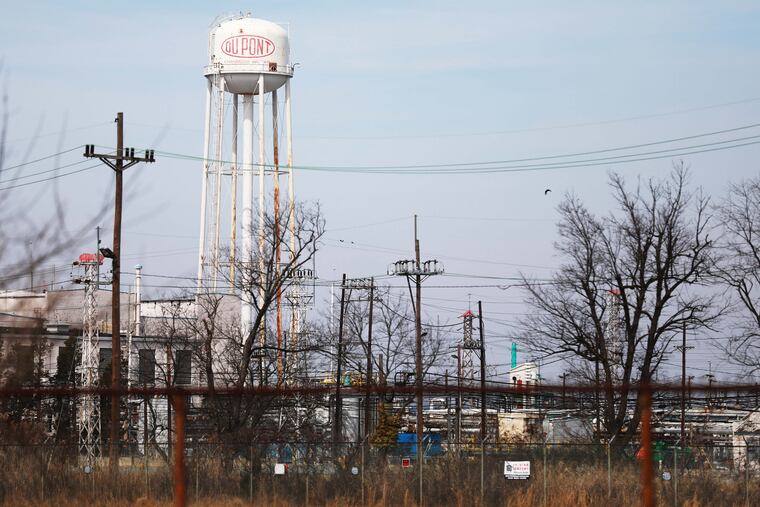New Jersey moves to enact tougher drinking water standards for PFAS
New Jersey released proposed drinking water limits that could force at least 40 water systems to clean up, part of a contamination crisis that has affected areas surrounding manufacturing facilities and Joint Base McGuire-Dix-Lakehurst.

New Jersey unveiled a proposal Monday for a drinking water standard for two PFAS chemicals, moving to establish limits that would be among the most stringent in the country and could force at least 40 public systems to clean up their water.
The proposed standards, released in the state register, are much tougher than current federal advisories for the chemicals. New Jersey is among the states moving most quickly to address the problem, which has affected drinking water systems nationwide.
The Department of Environmental Protection proposed drinking water limits of 14 parts per trillion (ppt) for PFOA and 13 ppt for PFOS, two types of per- and polyfluouralkyl substances known as PFAS. Such standards, known as maximum contaminant levels, set a legally binding limit for the amount of a substance that is permitted in drinking water systems.
Some states have moved to make their own levels for PFAS as they criticize the Environmental Protection Agency for moving too slowly. The EPA’s current health advisory is 70 ppt for PFOS and PFOA combined, and it is not enforceable.
For New Jersey residents, Monday’s proposal is a long-awaited response to a contamination crisis that has affected areas surrounding manufacturing facilities and Joint Base McGuire-Dix-Lakehurst.
The regulation would put 39 public water systems over the limit for PFOA and 19 for PFOS, according to the state’s proposal, increasing the number of public wells considered contaminated and requiring new cleanup projects. Of those, 11 systems are already addressing PFOA contamination and four are working on PFOS.
“New Jersey is leading the way in addressing an issue of national importance by setting the first drinking water standards in the nation to protect the public from the health risks of these chemicals,” said DEP Commissioner Catherine R. McCabe. “We will continue to take strong actions to protect the health of our residents and the quality of our drinking water supplies.”
New Jersey’s is currently the lowest binding standard formally proposed, but whether the limits become the first or lowest in the nation depends on how quickly other states move. New York is “on target” to adopt limits of 10 ppt for each of the two chemicals, according to the state health department. Vermont has begun the formal process for limits at 20 ppt.
California already recommends drinking wells be shut off if above 14 ppt in PFOA or 13 ppt in PFOS, but the levels aren’t legally enforceable.
In Pennsylvania, towns in Bucks and Montgomery Counties have drinking water supplies tainted by PFAS, which are linked to health problems including cancer. Pennsylvania officials have said they will launch their own process for setting maximum contaminant levels for PFOS and PFOA, and will hire a toxicologist and other personnel to review research and conduct in-house testing, said Neil Shader, a spokesperson for the Pennsylvania Department of Environmental Protection.
New Jersey’s standards were recommended by the state’s Drinking Water Quality Institute in 2017. The DEP accepted them, meaning it would move forward with creating the standards — but residents have waited for further action.
The process will still take months. The DEP will hold a public hearing next month and accept public comments until the end of May, and then must make a draft document before the new rules can be reviewed and adopted.
The rule, once enacted, would require public water systems to test quarterly for the contaminants. Private well testing would be required as part of real estate transactions and on rental properties.
“This is critical for protecting our drinking and groundwater,” said Jeff Tittel, director of the New Jersey Sierra Club. “Now the DEP needs to adopt these standards as soon as possible. The sooner we do, the quicker we can start removing toxic chemicals from our drinking water and cleaning up toxic sites.”
In the last few years, dozens of public and private wells nationwide have been shut off and treated for high levels of PFAS. But the EPA has not created a drinking water rule governing how much PFAS is safe and legal in public drinking water, instead making only the nonbinding health advisory.
Some experts say the EPA advisory is not protective enough of public health, and many residents in communities where drinking water has been cleaned up to that standard still worry about their health.
State limits would require the military, manufacturers, and other polluters to clean up drinking wells according to the state standards. The military currently handles cleanup in communities near bases — including in Pennsylvania and New Jersey — where drinking water is above the EPA health advisory, but the Pentagon has said it will follow any state standards created.
The EPA said in February it would begin creating a federal maximum contaminant level for PFAS, a process that will take years. Advocates and politicians are skeptical of the EPA’s plan to address the contamination, saying it is not ambitious enough.
New Jersey officials took action against companies last week for PFAS contamination, filing lawsuits over cleanup against DuPont, 3M, and Chemours, a DuPont spin-off company. The state also issued an order for those three companies as well as a fourth, Solvay, to pay for cleanup.
In September, New Jersey became the first state to create a binding standard for another type of perfluorinated compound, PFNA, setting a drinking water limit of 13 ppt. The state announced interim groundwater standards for PFOA and PFOS last month.